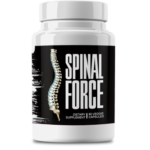This Village-Made Chinese Pain Reliever Eliminates Back And Joint Pain!
Can Massage Therapy Provide Muscle Joint Pain Relief?

Muscle and Joint Pain Relief: How Massage Therapy Can Help
Let’s be honest—muscle and joint pain can turn even simple tasks into uphill battles. Whether it’s from hunching over a laptop, pushing too hard at the gym, or just the natural effects of aging, that nagging discomfort is something most of us know all too well. But what if you could find relief without reaching for painkillers? That’s where massage therapy comes in. More than just a spa luxury, it’s a proven way to ease pain and boost overall wellness. In this guide, we’ll break down how massage works, the best techniques for different types of pain, and who stands to benefit the most.
What Exactly Is Muscle and Joint Pain?
Muscle and joint pain isn’t just one thing—it can show up as stiffness, soreness, or even sharp discomfort in your muscles, tendons, or joints. Sometimes it’s a dull ache; other times, it’s enough to sideline you. Common triggers include:
- Overdoing it: Heavy lifting, repetitive movements, or sudden intense workouts.
- Slouching syndrome: Desk jobs and poor posture are prime culprits.
- Inflammation: Thanks to conditions like arthritis or old injuries.
- Stress: Ever notice how tension seems to settle in your shoulders? That’s no coincidence.
Why Does It Hurt? The Usual Suspects
Pinpointing the cause of your pain is half the battle. Here are some frequent offenders:
- Arthritis: Osteoarthritis wears down joints, while rheumatoid arthritis fires up inflammation.
- Fibromyalgia: This tricky condition brings widespread muscle pain and fatigue.
- Injuries: Sprains, strains, and tears from sports or accidents.
- Too much couch time: Sitting around weakens muscles and stiffens joints.
Massage Therapy: Your Natural Pain Relief Partner
Think massage is just for relaxation? Think again. It’s a science-backed way to tackle pain head-on. By boosting blood flow, calming inflammation, and loosening tight muscles, massage helps your body heal itself. Whether you’re a gym rat, a desk jockey, or just feeling the years pile up, the right massage can make a world of difference.
Why Massage Works: The Science of Pain Relief
Massage isn’t magic—it’s biology. Here’s what’s happening under your skin:
Better Blood Flow = Less Pain
When muscles are tight or injured, circulation takes a hit. That means less oxygen for repair and more inflammation. Massage gets the blood pumping again, delivering nutrients where they’re needed and flushing out the gunk that makes pain stick around. Research even shows it can dial down those inflammatory chemicals that keep you hurting.
Knots Be Gone!
Those painful lumps in your shoulders? They’re called trigger points, and they can refer pain all over. A skilled massage therapist uses targeted pressure to smooth them out, like unknotting a tangled rope. The result? More flexibility and way less discomfort.
What the Research Says
Studies don’t lie—massage therapy consistently scores points for pain relief. From lower back pain to arthritis, research in journals like the Journal of Pain Research shows it can reduce pain and even cut down on medication use. Many patients report moving easier and feeling better after regular sessions.
Finding Your Perfect Massage Match
Not all massages are created equal. The right one depends on what’s ailing you:
Swedish Massage: The Gentle Giant
Great for beginners or everyday tension, Swedish massage uses flowing strokes to relax muscles and improve circulation. It’s like hitting the reset button on stress.
Deep Tissue: For Stubborn Pain
Got chronic aches or old injuries? Deep tissue goes beneath the surface to work out those tough knots. It’s intense but effective—especially for issues like sciatica.
Trigger Point Therapy: Precision Pain Relief
This technique zeroes in on those specific spots causing referred pain (looking at you, neck and shoulders). A few minutes of focused pressure can bring sweet relief.
Sports Massage: The Athlete’s Secret Weapon
Whether you’re a pro or just weekend-active, sports massage blends stretching and deep work to boost performance and speed recovery.
Bonus Benefits: More Than Just Pain Relief
While easing pain is the headline, massage has some great side effects:
Stress? What Stress?
Massage slashes cortisol (your stress hormone) while boosting feel-good chemicals like serotonin. Translation: You’ll walk out feeling lighter and clearer.
Move Freely Again
Tight muscles mean stiff joints. Regular massage loosens things up, giving you back your range of motion and lowering injury risk.
Sleep Like a Baby
Many people find they sleep deeper after massage—and since healing happens during rest, that’s a big win.
Who Gets the Most From Massage?
While almost anyone can benefit, these groups often see dramatic changes:
Active Folks
From marathoners to yoga enthusiasts, massage helps muscles recover and prevents overuse injuries.
Office Warriors
If your workday involves a chair and a screen, massage can undo the damage of sitting—realigning muscles and improving posture.
Golden Years Relief
Gentle massage can ease arthritis pain, improve circulation, and help seniors stay mobile.
How Often Should You Go?
It depends on your situation:
Timing It Right
- Sharp pain? Start with 1-2 weekly sessions until it eases.
- Chronic issues? Bi-weekly or monthly maintenance works wonders.
- Prevention? A monthly tune-up keeps small problems from becoming big ones.
Team Up for Better Results
For maximum benefit, combine massage with stretching, staying hydrated, and strength training.
Listen to Your Body
If you’re constantly stiff, moving less freely, or battling headaches, your body might be begging for a massage.
A Few Things to Keep in Mind
Massage is incredibly safe for most people, but there are exceptions:
When to Skip It
- Fresh injuries like fractures or severe sprains
- Certain health conditions (e.g., blood clots, very high blood pressure)
- Skin infections or open wounds
Finding Your Massage Match
Look for a licensed therapist experienced with your specific needs—don’t be shy about asking questions.
Aftercare Tips
A little soreness after deep work is normal. Drink plenty of water and use ice if needed.
Wrapping Up
Massage therapy isn’t just about feeling good in the moment—it’s a powerful tool for lasting muscle and joint pain relief. Whether you’re dealing with chronic discomfort, recovering from an injury, or just want to move through life more easily, regular massage can be a game-changer. Why not give it a try? Your body will thank you.








